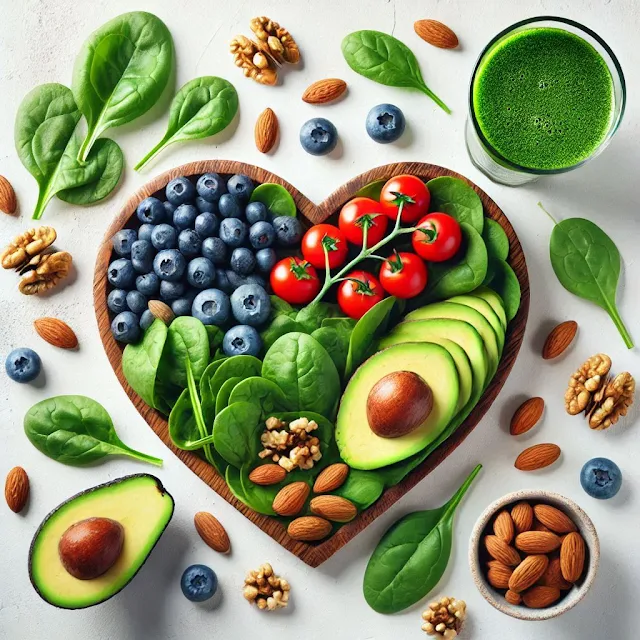Introduction
Plant-based diets are growing in popularity for their profound health benefits, environmental advantages, and ethical considerations. This dietary approach focuses on foods derived primarily from plants, including fruits, vegetables, nuts, seeds, and whole grains. Transitioning to a plant-based diet not only boosts health but also supports sustainability.
In this article, we’ll delve into the key aspects of plant-based eating, explore its benefits, provide actionable tips for beginners, and answer common questions. Let’s embrace a healthier, greener future!
The Basics of a Plant-Based Diet
Plant-based diets revolve around consuming whole, minimally processed foods primarily derived from plants. While some individuals exclude all animal products, others may include occasional meat, dairy, or eggs. Here's what a plant-based diet typically includes:
- Whole Grains: Quinoa, oats, brown rice, barley.
- Legumes: Lentils, chickpeas, black beans.
- Vegetables: Leafy greens, root vegetables, cruciferous varieties.
- Fruits: Berries, citrus, tropical fruits, and more.
- Nuts & Seeds: Almonds, flaxseeds, chia seeds, walnuts.
Types of Plant-Based Diets
- Vegan: Excludes all animal products.
- Vegetarian: Includes dairy and eggs but no meat or fish.
- Flexitarian: Primarily plant-based but occasionally includes meat or fish.
Health Benefits of Plant-Based Diets
Plant-based diets are not just a trend but a scientifically backed way to enhance overall well-being. Here are some key benefits:
1. Improved Heart Health
Studies show that plant-based diets reduce the risk of cardiovascular diseases by lowering blood pressure and cholesterol levels. The absence of saturated fats from animal products contributes to better heart health.
2. Weight Management
Rich in fiber and low in calories, plant-based foods promote satiety, helping with weight control. Research indicates that individuals on plant-based diets tend to have lower body mass indexes (BMI).
3. Diabetes Prevention
Plant-based diets improve insulin sensitivity and regulate blood sugar levels, reducing the risk of Type 2 diabetes. Whole foods like legumes and whole grains provide steady energy.
Environmental Impact of Plant-Based Diets
Transitioning to plant-based eating significantly reduces your carbon footprint. Here’s how it helps the planet:
1. Reduced Greenhouse Gas Emissions
Animal agriculture is one of the largest contributors to greenhouse gas emissions. Plant-based diets use fewer resources, making them a more sustainable choice.
2. Conservation of Water and Land
Growing crops for direct consumption requires less water and arable land compared to raising livestock. This promotes biodiversity and reduces deforestation.
3. Ethical Considerations
Plant-based eating aligns with animal welfare concerns, reducing the demand for factory farming and promoting humane treatment of animals.
How to Start a Plant-Based Diet
Embarking on a plant-based journey can seem daunting, but these steps make it easier:
1. Start Small
Begin by replacing one meal a day with a plant-based alternative. Gradually increase the number of plant-based meals over time.
2. Explore New Recipes
Experiment with simple yet delicious dishes like lentil soups, quinoa salads, and vegetable stir-fries. Cooking at home allows better control over ingredients.
3. Stock Up on Essentials
Fill your pantry with staples like beans, whole grains, nuts, and spices. This ensures you always have ingredients for nutritious meals.
4. Be Patient
Transitioning is a process. Give yourself time to adapt to new flavors and habits.
Common Myths About Plant-Based Diets
1. "You Can't Get Enough Protein"
Plant-based sources like lentils, tofu, quinoa, and chickpeas provide ample protein. Combining different sources ensures you get all essential amino acids.
2. "It’s Too Expensive"
Plant-based diets can be affordable when focusing on staples like beans, rice, and seasonal produce. Avoid processed vegan foods to save money.
3. "It’s Boring and Restrictive"
With endless recipes and global cuisines to explore, plant-based diets offer variety and excitement. From Mediterranean salads to Indian curries, there’s something for everyone.
Plant-Based Meal Ideas
Breakfast
- Oatmeal topped with fresh fruits and nuts.
- Avocado toast with a sprinkle of chia seeds.
Lunch
- Buddha bowls with quinoa, roasted veggies, and tahini dressing.
- Lentil soup paired with whole-grain bread.
Dinner
- Stir-fried tofu with broccoli and brown rice.
- Spaghetti with marinara sauce and a side salad.
Snacks
- Hummus with veggie sticks.
- Mixed nuts and dried fruits.
FAQs About Plant-Based Diets
Q1: Can I get enough vitamins and minerals on a plant-based diet?
Absolutely! A well-planned plant-based diet provides all essential nutrients. Consider fortified foods or supplements for Vitamin B12.
Q2: Is plant-based eating suitable for children?
Yes, with proper planning, children can thrive on a plant-based diet. Consult a pediatric dietitian for guidance.
Q3: How do I deal with cravings for meat?
Transition gradually. Try meat substitutes or focus on spices and marinades that mimic familiar flavors.











No comments:
Post a Comment
I genuinely appreciate you taking the time to read this blog post. Your support, comments, and engagement mean so much to me. Whether you’re here for the first time or have been following along for a while, I’m grateful to have you as part of this journey.
If you found value in this post, please consider sharing it or leaving a comment—your feedback helps me create content that resonates with you. Thank you for being a part of this community!
Warm regards,
Daily Boost Guide